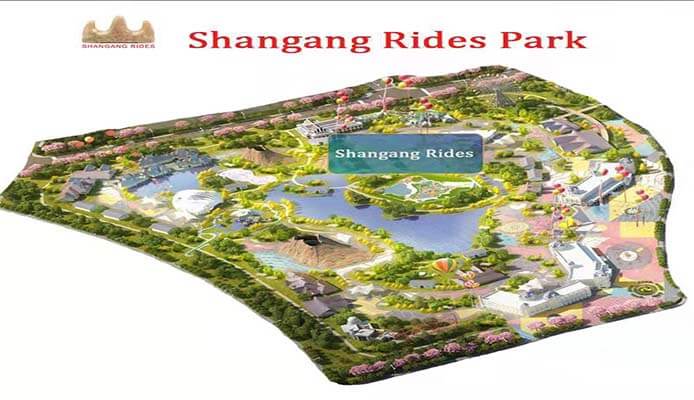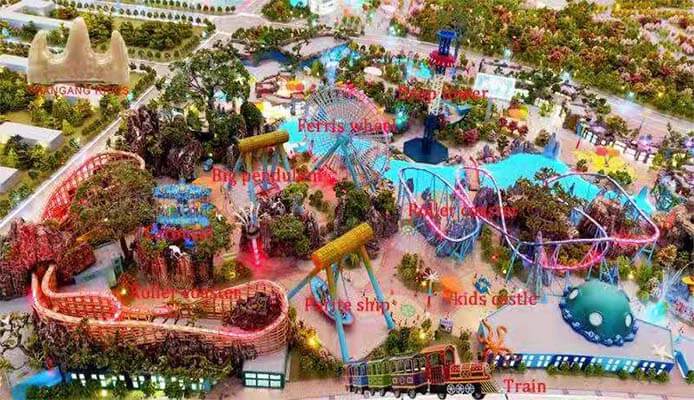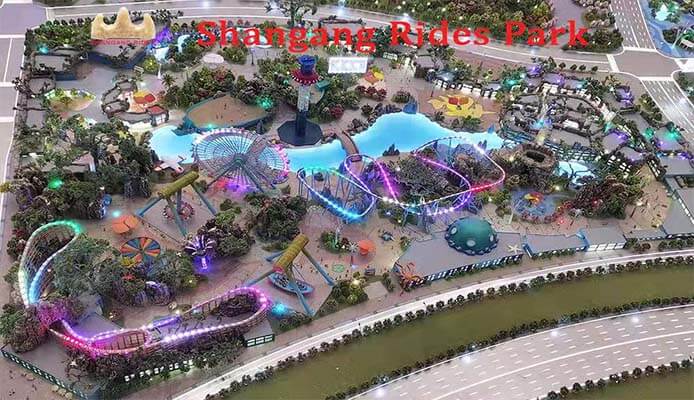This article will start from the general laws of the development, operation and development of cultural tourism projects, reflect on the planning and design of cultural tourism projects from the perspective of operation, and sort out the process of project development and operation and the key points of planning and design based on the relationship between cultural tourism development and operation. , using framework thinking, rationalizing the logic of development and operation, and discussing the main line of operation of cultural tourism development.
Since 2020, the continuous spread of the new crown epidemic has caused heavy losses in the tourism industry. With the prominence of various fulcrum issues such as investment and models in the tourism industry, most asset-heavy projects are in short supply, and the operation side has begun to rethink the importance of operation in the development process of cultural tourism projects, how to create good cultural tourism projects, develop How to judge the market demand, product direction and future development prospects of the project in the early stage. There is no doubt that the protracted battle of the “new crown epidemic” will change the development direction of the cultural tourism industry, subverting people’s traditional ways of working, studying, living and entertaining, and many of these changes will be long-term.
The operation management of cultural tourism projects is reflected in the project development and operation system, which is manifested as the business process of project development and operation. It is a complex operation system and is a management activity oriented to the development and operation process of cultural tourism projects. Design, operate, control and improve, so that the input resources are provided by the best planning design and construction process to provide tourists with satisfactory products or services. In layman’s terms, the development and operation of cultural tourism projects is the activation and operation of tourism products and services, including: infrastructure and service facilities construction in cultural tourism scenic spots, theme attractions planning, landscape creation, project design, environmental greening and beautification, staff training and service provision, etc. tangible and intangible products. Generally speaking, cultural tourism development belongs to regional comprehensive development. The operation management of cultural tourism project development is a composite comprehensive management composed of different types of industry management; it is a step-by-step process management from beginning to end, including: pre-development, development and construction, opening and operation, continuous improvement and transformation, and second-phase development Wait.
Each phase has a different focus as the project progresses. In the early stage of development, attention should be paid to top-level design, planning and planning, project establishment, land use planning, resource docking, reporting for regulations and construction, attracting investment, investment and financing services, and creation support. During the development and construction period, the introduction of construction resources, engineering design and management, EPC project construction, supervision, opening preparations, and pre-investment promotion should be promoted. During the development and operation period, the focus of the work is on marketing, investment promotion, detonation of opening, continuous operation, overall acceptance, property right evidence collection, project promotion, talent training, etc. The final implementation of cultural tourism projects is a process of comprehensive development and operation, which is a complex system structure. On the one hand, the development of cultural tourism projects requires the management of the whole process of development and operation, and on the other hand, the seamless connection of resources in investment and financing, planning, planning, construction, operation, etc. Difficulties and pain points in the development and operation of cultural tourism.
Under the guidance of the “pre-operational” thinking, cultural tourism development must have a scientific operation system, mature and perfect tourism products, attract professional planning talents, and introduce experienced operation teams, etc. This can not only realize the flow of funds, but also grasp the progress, creativity and innovation in the process of project advancement, and strengthen the overall control of each link.
The key work of the development is a collection of all-round elements such as the overall project funding plan, cooperative negotiation, and exit methods. Cultural tourism development must have investment thinking and industrial thinking, which is extremely important for investment teams and service providers. Under normal circumstances, the development of real estate projects is to invest in products first, which is based on the fact that the land has been acquired, has value, and has future profit space; and the biggest core of developing cultural tourism projects is from market capacity to revenue model to cost model. First of all, the income estimation of cultural tourism projects is based on the transformation of surrounding cities, core IP and channels. Secondly, the organizational form, division of labor and financial capacity of project development. When developing a project, is all the project scope developed by yourself? Or are some areas or sub-projects outsourced or cooperative? This organizational form will determine the profitability and income of the entire industry in the future of the overall project. After comprehensively considering the cultural tourism project, what is the income in the first year? What is the income in the second year? What is the income in the third year? How many years can a positive flow of cash flow be generated. Therefore, the first step in developing a cultural tourism project is to do a professional market survey, feasibility study and financial analysis report to figure out how to calculate an account? That is, the relationship between revenue, cost and profit. Therefore, we can only change our thinking, make the introduction of project development funds more market-oriented, introduce various cooperation models of GP and LP, arrange the exit mechanism and capital market in advance, and make the layout of the industrial chain reasonable and controllable, so as to make high investment , rapid turnaround, heavy cooperation and smooth exit can be more smooth, which is also a new issue faced by the comprehensive development of cultural tourism projects.
The commercial operation of a cultural and tourism project is a systematic project. The commercial operation of the project development is preceded by several common problems: business structure, catering business, dynamic design, investment promotion, etc. Let’s talk about business structure first. Experienced operation teams often start from the perspective of operation from the beginning of development and preparation, and carry out business planning and operation design to raise capital. Taking the business scenic spot (cultural tourism town) as an example, the business structure of the town is the core attractive product of the town, including accommodation, commerce, catering, leisure and entertainment, etc. The most important thing is to establish a consumption chain. The consumption ecological chain is basically a good start. Therefore, the design of the business structure must be carried out in the early planning and planning stage of the project. Let’s talk about the catering business. The catering industry involves the size of the property. Once the space shape is determined, the fate of the property is basically determined, including whether it is good to be used or not, and what type of business is it used for. No matter what kind of business you are doing, the best spatial form is square. The fewer columns, the better, which is convenient for rational layout. If you want to plan a food and snack street, the width of the street is very particular. The street is too wide and it is not easy to gather customers; The streets are too narrow for people to get in, making business difficult. All of these must be positioned according to the target market, and the behavioral habits of tourists must be studied, which is also a key point in the pre-commercial design.


